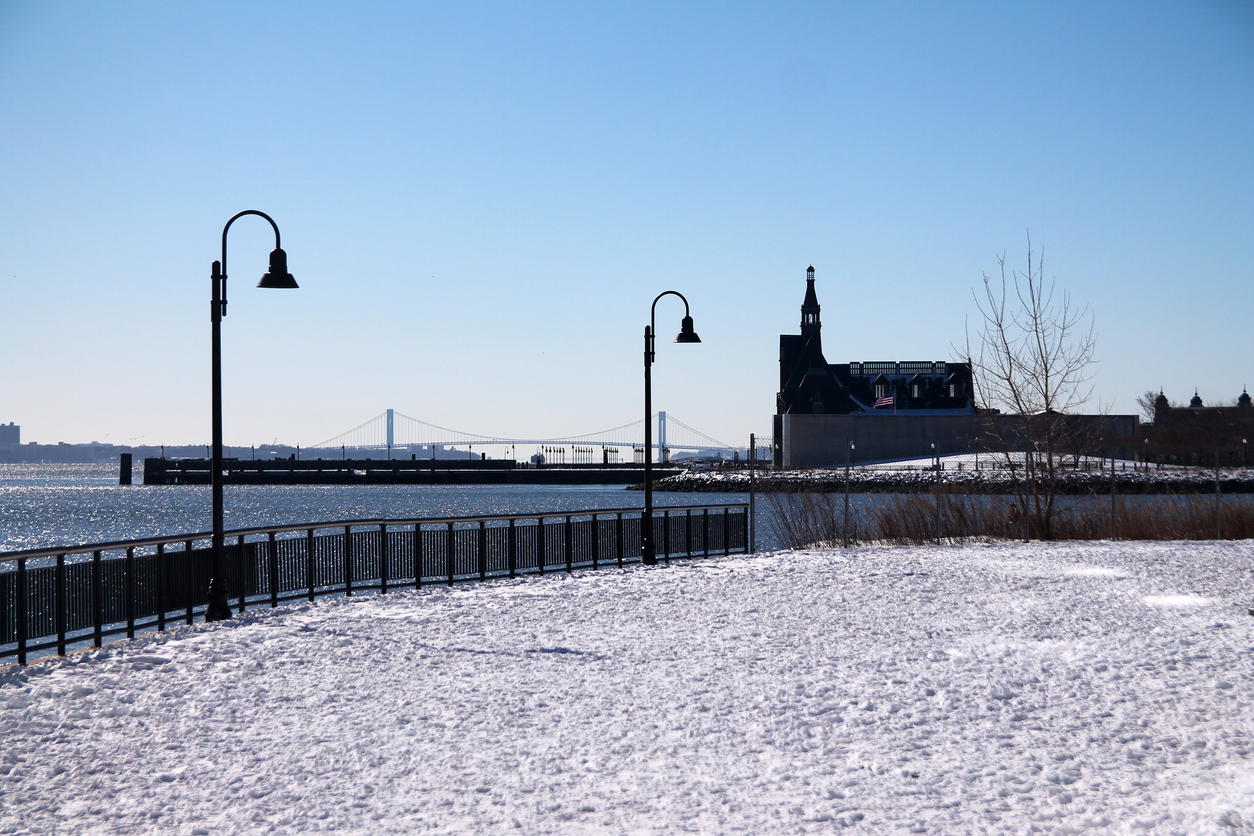
In the span of a decade, LEDs have transformed everything from car headlights to Christmas trees to streetlights. And it makes sense: compared to their conventional incandescent or high-pressure sodium (HPS) counterparts, LEDs use less energy, produce better, more direct light, and last almost seven times as long, resulting in significant cost savings.
Given the long list of benefits, it’s no surprise municipalities have embraced them with gusto. According to the U.S. Department of Energy (DOE), there are now more than 46 million outdoor LED street and area lights in the United States, with millions more spanning the globe.
But for all their advantages, LEDs have not been a perfect solution. Many high-intensity LEDs emit a large amount of blue-white light that’s been shown to “decrease visual acuity and safety,” creating hazardous conditions for nighttime driving. The harsh light in residentials areas has also been found to disrupt people’s natural sleep patterns, reduce night sky visibility, and have adverse effects on nocturnal animals.
The good news: LED technology has come a long way since those first blue-white lights came to market. Municipalities today can achieve a warmer, safer color temperature in their streetlights while still enjoying the myriad benefits that LEDs bring.
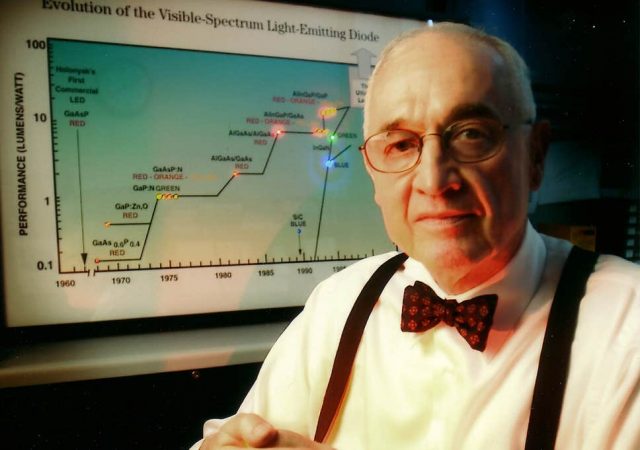
The first visible-spectrum LED light was developed in 1962 by Nick Holonyak, Jr., an engineer at General Electric attempting to build a laser. It was red, the result of mixing gallium arsenide with gallium phosphide. Colleagues at GE dubbed it “the magic one” and within a few years, it was followed by red-orange, orange and yellow LEDs (green, blue, and violet didn’t come until the early 1990s).
Coming up with a white LED was decidedly more complex. While it’s possible to achieve a white light by combining red, white, and blue LEDs in a single enclosure, a more practical and effective method was pioneered by engineers at Nichia Chemical Industries in Japan in 1997.
They used a blue light—the cheapest, most efficient color to produce because of its short wavelength—and shone it onto compounds called phosphors that absorb some of the blue light and emit yellow light. When the yellow light combined with the blue light, the result appeared white—almost too white.
That’s because the shade of white emitted depends on the blend of yellow and blue. The LEDs developed by Nichia came in at 8,000K on the kelvin temperature scale, meaning they emitted more than 45% blue light and appeared harsh to the eye. (For comparison, most HPS bulbs with a “warm” orange-yellow hue have a color temperature of 2700-3000K).
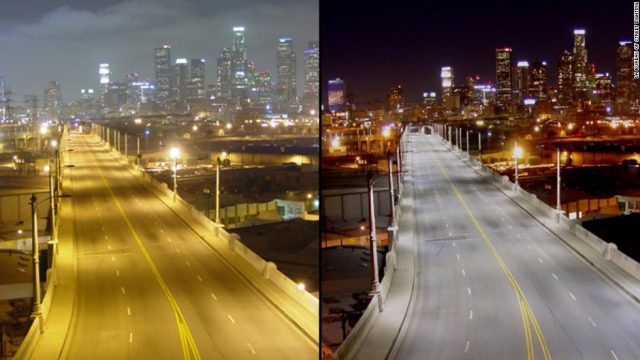
By 2008, engineers had been able to improve the quality of white LEDs somewhat. In a whitepaper published that year, the DOE noted that the most efficient white LEDS of the time measured 4,500 to 6,500K—still blue, but not as blue.
This combined with the remarkable energy and cost savings touted by the DOE was enough to spur cities and towns across the country to adopt LED streetlights en masse. By 2016, an estimated 30% of outdoor lights the U.S. had been switched to LEDs, including those problematic blue-white lights, at a cost of billions of dollars.
As promised, many cities have reaped the savings benefits of the swap. For instance, since converting nearly 180,000 of its 220,000 streetlights to LED “smart poles,” the city of Los Angeles has reduced its energy use by 70% and carbon emissions by almost 50,000 metric tons—not to mention the $10 million savings on their utility bill. New York is in the midst of a similar overhaul, retrofitting all 250,000 of its streetlights with an anticipated combined energy and maintenance savings of $14 million a year.
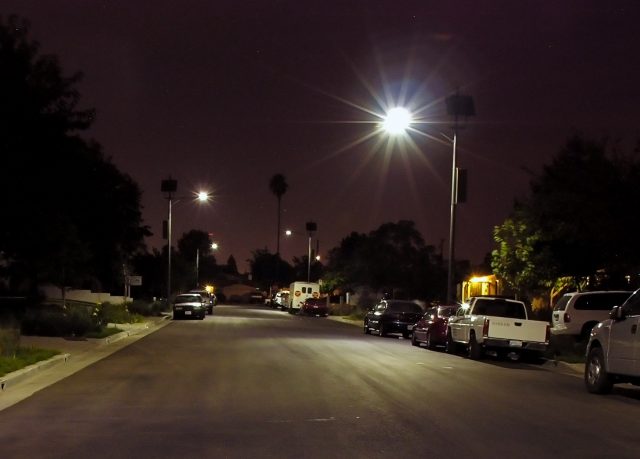
While LED technology has clearly saved municipalities a lot of money, it may have done so to the detriment of residents’ health. There’s now a mounting body of research demonstrating that if not properly implemented and controlled, light from LEDs can have profound negative effects on our safety, sleep, and environment.
In 2016, the American Medical Association (AMA) issued a warning that blue light emitted by LED streetlights can create a glare that actually worsens nighttime visibility. They also warned about LED lights’ ability to suppress the melatonin and disrupt natural circadian rhythms. “It is estimated that white LED lamps have five times greater impact on circadian sleep rhythms than conventional street lamps,” they wrote.
And the effects aren’t limited to humans: Studies have shown that the lights affect many species, including fish, insects, birds, and other animals that depend on dark environments for survival. For instance, sea turtle hatchlings have confused the bright-white street lights for the light of the moon, skittering inland rather than toward the ocean, dying in the hundreds of thousands each year on U.S. beaches.
This research—combined with the experience of living with the new lights—has led citizens to express their concern over the installation of LED lights in their cities. When the New York City Department of Transportation (NYCDOT) began their installations in 2015, they received around 150 complaints. Another petition organized by Seattle residents urges, “Don’t let Seattle City Council turn our neighborhood into a Wal-Mart parking lot.”
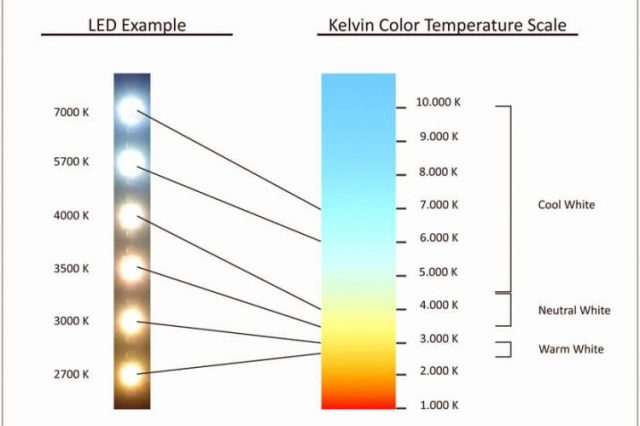
While some cities have chosen—or been forced due to budgetary constraints—to stick with their blue-white LEDs, public pressure has forced others to replace the LEDs with warmer lights. Montreal, for example, initially planned to retrofit 132,000 of its streetlights with 4,000K LEDs, but ultimately decided on warmer 3,000K lights after residents complained. The city of Davis, CA also opted to replace its 4,000K LED streetlights with a warmer alternative just months after they were put up in 2014.
Fortunately, warmer LED streetlights are now available—and they’re just as efficient as their blue-white predecessors. Engineers at Cree (one of the top U.S. makers of LED light fixtures and ) discovered in 2016 that by adding high-efficiency, red LEDs to standard blue LEDs with yellow phosphors, they could reach a warmer color temperature with a much smaller lumen loss compared to the previous method of adding red-emitting phosphors. (Previously lumen loss was as much as 70%—the new method slashes that to just 1%.)
In recent years, lighting manufacturers have also been able to achieve the 3000K color temperature without combining red and blue LEDs, taking a more traditional approach to their engineering and reducing costs in the process. This improvement means warm LEDs are now a “no brainer” for cities, who can achieve energy efficiency and reduced costs while avoiding negative health and environmental impacts.
The bottom line? There’s never been a better time to invest in efficient, sustainable outdoor lighting. Click the link below to learn more about how solar LED streetlighting can benefit your community, then head over to our Build & Price page to get an estimate for your project.
